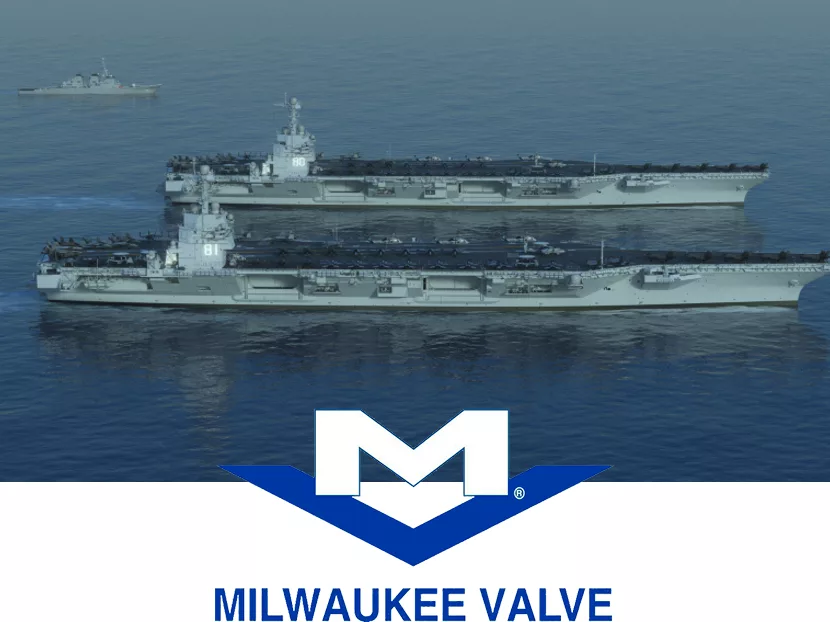On Saturday, Aug. 27, when the ceremonial keel was laid on the U.S. Navy nuclear-powered aircraft carrier, Enterprise (CVN 80), in Newport News, Virginia, members of Milwaukee Valve were watching the formal start of a ship's construction with pride knowing they are part of the industrial base that constructs the most advanced warships in the world.
Milwaukee Valve is of one more than 2,000 supply-chain companies in 45 states delivering products and services to build and maintain the U.S. Navy aircraft carrier fleet, which are built at HII’s Newport News Shipbuilding division in Virginia. In total between the shipyard and the supply-chain, the industrial base is comprised of more than 92,000 essential workers who design, weld, build, and maintain the components that go on these cutting-edge warships.
Once built, the Enterprise is scheduled to serve the country for 50 years. Gerald R. Ford-class aircraft carriers feature a redesigned island, electromagnetic catapults and improved weapons movement, and are designed to be the centerpiece of the Navy’s deployed battle force and alongside allies and partners, defending freedom, preserving economic prosperity, and keeping the seas open and free.
“As we mark the formal recognition of Enterprise’s construction, the men and women of Milwaukee Valve take pride in building a ship that will sail the seas for 50-years. The contract for this work has had a substantial impact, especially during the headwinds of the past few years. The multi-ship contract of CVN 80 & 81 helped save jobs at our company and enabled us to invest in equipment used for aircraft-carrier components,” said Rick Giannini, Milwaukee Valve’s president and CEO.
In January 2019, the U.S. Navy signed a two-ship buy contract for two Ford-class carriers, the Enterprise (CVN-80) and Doris Miller (CVN 81), which is the most efficient and affordable way to build carriers and ensure workforce and industrial base stability. This “two ship buy” helped the industrial base weather the storm of the past few years enabling companies across the nation to save jobs, retain and hire skilled workers, injecting stability and local investment into the supply chain. This smart procurement decision in 2019 helped preserve the workforce entrusted to design and build ships that evolve with our nation’s national security strategy, proving multi-ship buys are good for the nation, Navy, industrial base, and taxpayer.




